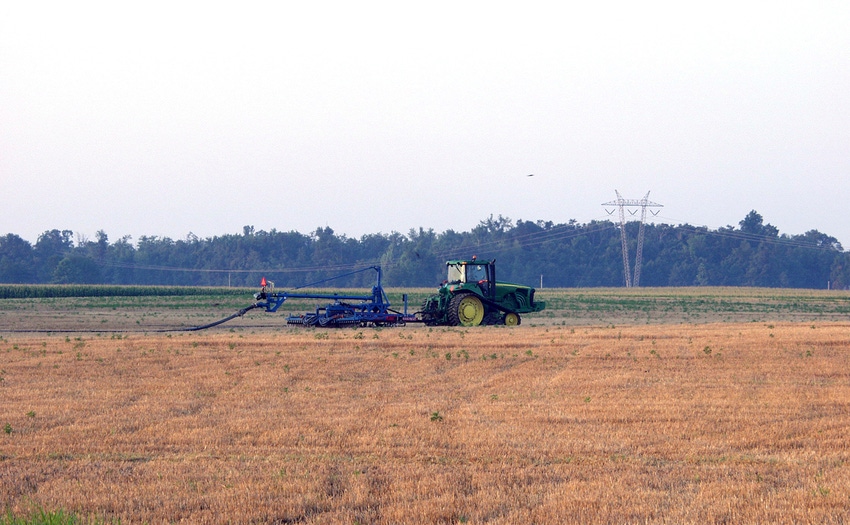How can we do a better at moving manure from farmstead to field, quickly, safely and environmentally consciously?
November 1, 2017

Soon after crops are removed from fields in the fall, livestock producers and commercial manure applicators get busy hauling the natural fertilizers to those stubble fields.
As soon as that starts happening across the countryside, Iowa State University’s Daniel Andersen’s thoughts turn to thoughts of “How can we do a better at moving manure from farmstead to field, quickly, safely and environmentally consciously?”
Andersen is an assistant professor in the ISU Department of Agricultural and Biosystems Engineering and writes a regular blog “The Manure Scoop,” earning him the moniker Dr. Manure.
In his recent blog, Andersen writes that “Manure has long been considered a valuable input to the soil for crop production and in its broadest sense manure management is the science of figuring out the most appropriate use of animal manure and how to get the most benefit for the least expense while protecting air, soil, and water quality.”
Part of that manure management equation is figuring out how to get billions of gallons of liquid manure applied quickly, safety, accurately and as cost effectively as possible. Andersen says there are several ways to do this: bigger equipment, more people in the manure business, extending application seasons either by planting crops with different harvest windows or developing technologies that allow application during the season.
In his latest “Manure Scoop” blog, Andersen focuses on nutrient delivery rates with drag line systems, admitting that his costs are all approximate “as lots of factors can influence cost, but right now we are going to take a look at why application rate may be important.”
Using the examples of a dairy farm and a swine finishing farm, each generating the same amount of available nitrogen for land application every year. “Let’s say this is a 4,800-head swine farm so it will generate about 1.75 million gallons of manure a year or about enough manure for 695 acres (approximately 60 pounds of nitrogen per 1,000 gallons). At this farm we’d have an application rate of about 2,500 gallons per acre.”
Knowing how much manure you have and knowing the proper application rates are just two pieces of this puzzle. Having the right equipment to get the manure from Point A to Point B is key to efficient and proper manure application.
“For illustrative purposes, I’m going to ballpark $500,000 in equipment costs (pumps, hose, drags and a toolbar) but that is all dependent on what you are using. In the case of swine manure, let’s assume we have a 30-foot bar and can drive through the field at 7 mph. This means they can cover 0.42 acres per minute and to get 2,500 gallons per acre the flow rate would be about 1,060 gallons per minute. This means to get all 1.75 million gallons applied would take 27.5 hours, and assuming the crew was about 50% efficient it would take about 55 hours overall.”
Taking his estimates to the next step, Andersen looks at the manure application cost beyond the equipment. “Let’s assume run time costs about $500 an hour (tractors, fuel, wear and tear, etc.). If we figure a five-year equipment life and that 1.75 million gallons is about 10% of the total gallons they apply every year, then our cost for manure here would be about $37,500 or about $0.02 a gallon of manure applied or about $0.36 per pound of N applied.”
In closing, Andersen suggests that producers get a good handle on what exactly goes into figuring a per gallon price and application rates, without losing sight of the fertilizer benefit being provided to crop ground.
This blog, and all of Andersen’s blogs, can be read at The Manure Scoop.
You May Also Like



